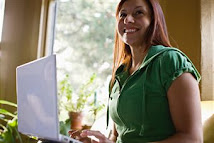 One issue that frequently comes up in this program is the need for nutrition education among refugees. When someone has spent years "doing without," the vast array of food in supermarkets here can be overwhelming. There is also a strong tendency to buy foods that are advertised on TV, junk food, and foods with a lot of sugar. Heart disease and diabetes are just two of the health conditions that are soaring among the resettled refugee populations in the Untied States.
One issue that frequently comes up in this program is the need for nutrition education among refugees. When someone has spent years "doing without," the vast array of food in supermarkets here can be overwhelming. There is also a strong tendency to buy foods that are advertised on TV, junk food, and foods with a lot of sugar. Heart disease and diabetes are just two of the health conditions that are soaring among the resettled refugee populations in the Untied States.The U.S. Committee for Refugees and Immigrants has published a nutrition education toolkit that is specifically targeted to the refugee population. The language is simple, the illustrations reflect the population served, and everything in it can be used to teach your food-related lessons! Did I mention it's free?
 The materials come in many languages, so if your student is literate, you could work with the materials in English and then provide a translated copy for the student to use at home. Some of the languages available are: Arabic, Amharic, Burmese, Karen, Farsi, French, Kirundi, Somali, Swahili, Russian, Vietnamese. There is even a 16"x20" poster you can reduce to 8"x10" so it will fit on regular paper. The poster shows what a balanced diet looks like.
The materials come in many languages, so if your student is literate, you could work with the materials in English and then provide a translated copy for the student to use at home. Some of the languages available are: Arabic, Amharic, Burmese, Karen, Farsi, French, Kirundi, Somali, Swahili, Russian, Vietnamese. There is even a 16"x20" poster you can reduce to 8"x10" so it will fit on regular paper. The poster shows what a balanced diet looks like.Other materials (and they are fabulous!) include an eight-page brochure outlining different aspects of healthy eating, the poster, and a flipchart book for teachers to use. You could easily print out the flip book, three-hole punch it, put it in a binder and use it as a teaching tool. The link to download the flip book is right under the picture of it.
To see and download any of the materials, click here.










No comments:
Post a Comment